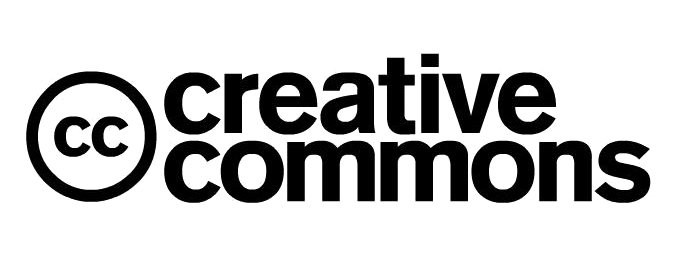Влияние дефицита кинуренинов на обучение и память у дрозофилы при стадиеспецифичном действии теплового шока
DOI:
https://doi.org/10.33910/2687-1270-2025-6-1-85-96Ключевые слова:
дрозофила, кинурениновый путь обмена триптофана, обучение, память, тепловой шок, условно-рефлекторное подавление ухаживания, грибовидные тела, центральный комплексАннотация
В 1960–1970-х гг. И. П. Лапин впервые открыл, что кинуренин и его метаболиты влияют на функции мозга, и предположил роль нейрокинуренинов в патогенезе депрессии и механизмах действия антидепрессивного эффекта. Впоследствии была показана универсальность их действия у позвоночных и беспозвоночных животных, что позволило широко использовать в этих исследованиях дрозофилу, прежде всего мутантов по кинурениновому пути обмена триптофана (КПОТ). Выявлена вовлеченность кинуренинов в развитие ряда нейропатологий человека, а также заболеваний, ассоциированных со старением и хроническим воспалением. Удобной и востребованной моделью изучения воздействия метаболитов КПОТ на поведенческие процессы являются мутанты КПОТ дрозофилы. Кроме того, в фокусе современной нейробиологии находится поиск общих механизмов, связывающих когнитивные функции и реакцию на стрессорное воздействие. Настоящая работа посвящена исследованию влияния действия теплового шока на разных стадиях онтогенеза на процессы обучения и формирования памяти в условиях дефицита кинуренинов у дрозофилы. Сохранность обучения и памяти у мутанта v1 позволяет предполагать ключевую роль в этих процессах именно нарушения соотношения различных метаболитов КПОТ.
Библиографические ссылки
Badawy, A. A.-B. (2017) Kynurenine pathway of tryptophan metabolism: Regulatory and functional aspects. International Journal of Tryptophan Research, vol. 10, article 1178646917691938. https://doi.org/10.1177/1178646917691938 (In English)
Bang, S., Hyun, S., Hong, S.-T. et al. (2011) Dopamine signalling in mushroom bodies regulates temperature-preference behaviour in Drosophila. PLoS Genetics, vol. 7, no. 3, article e1001346. https://doi.org/10.1371/journal.pgen.1001346 (In English)
Bässler, U. (1983) Neural basis of elementary behavior in stick insects. Berlin: Springer-Verlag, 169 р. (In English)
Bryleva, E. Y., Brundin, L. (2017) Kynurenine pathway metabolites and suicidality. Neuropharmacology, vol. 112 (B), pp. 324–330. https://doi.org/10.1016/j.neuropharm.2016.01.034 (In English)
Buhl, E., Kottler, B., Hodge, J. J. L., Hirth, F. (2021) Thermoresponsive motor behavior is mediated by ring neuron circuits in the central complex of Drosophila. Scientific Reports, vol. 11, no. 1, article 155. https://doi.org/10.1038/s41598-020-80103-9 (In English)
Campesan, S., Green, E. W., Breda, C. et al. (2011) The kynurenine pathway modulates neurodegeneration in a Drosophila model of Huntington’s disease. Current Biology, vol. 21, no. 11, pp. 961–966. https://doi.org/10.1016/j.cub.2011.04.028 (In English)
Davis, R. L. (2023) Learning and memory using Drosophila melanogaster: A focus on advances made in the fifth decade of research. Genetics, vol. 224, no. 4, article iyad085. https://doi.org/10.1093/genetics/iyad085 (In English)
El-Defrawy, S. R., Boegman, R. J., Jhamandas, K., Beninger, R. J. (1986) The neurotoxic actions of quinolinic acid in the central nervous system. Canadian Journal of Physiology and Pharmacology, vol. 64, no. 3, pp. 369–375. https://doi.org/10.1139/y86-060 (In English)
Erhardt, S., Schwieler, L., Imbeault, S., Engberg, G. (2017) The kynurenine pathway in schizophrenia and bipolar disorder. Neuropharmacology, vol. 112 (B), pp. 297–306. https://doi.org/10.1016/j.neuropharm.2016.05.020 (In English)
Fathi, M., Vakili, K., Yaghoobpoor, S. et al. (2022) Dynamic changes in metabolites of the kynurenine pathway in Alzheimer’s disease, Parkinson’s disease, and Huntington’s disease: A systematic review and meta-analysis. Frontiers in Immunology, vol. 13, article 997240. https://doi.org/10.3389/fimmu.2022.997240 (In English)
Ferré, J. (1983) Accumulation of kynurenic acid in the “cinnabar” mutant of Drosophila melanogaster as revealed by thin-layer chromatography. Insect Biochemistry, vol. 13, no. 3, pp. 289–294. https://doi.org/10.1016/0020-1790(83)90051-3 (In English)
Fiala, A., Kaun, K. R. (2024) What do the mushroom bodies do for the insect brain? Twenty-five years of progress. Learning & Memory, vol. 31, no. 5, article a053827. https://doi.org/10.1101/lm.053827.123 (In English)
Flores-Valle, A., Gonçalves, P. J., Seelig, J. D. (2021) Integration of sleep homeostasis and navigation in Drosophila. PLOS Computational Biology, vol. 17, no. 7, article e1009088. https://doi.org/10.1371/journal.pcbi.1009088 (In English)
Foster, A. C., Vezzani, A., French, E. D., Schwarcz, R. (1984) Kynurenic acid blocks neurotoxicity and seizures induced in rats by the related brain metabolite quinolinic acid. Neuroscience Letters, vol. 48, no. 3, pp. 273–278. https://doi.org/10.1016/0304-3940(84)90050-8 (In English)
Green, E. W., Campesan, S., Breda, C. et al. (2012) Drosophila eye color mutants as therapeutic tools for Huntington disease. Fly, vol. 6, no. 2, pp. 117–120. https://doi.org/10.4161/fly.19999 (In English)
Hanesch, U., Fischbach, K.-F., Heisenberg, M. (1989) Neuronal architecture of the central complex in Drosophila melanogaster. Cell and Tissue Research, vol. 257, no. 2, pp. 343–366. https://doi.org/10.1007/BF00261838 (In English)
Heisenberg, M., Borst, A., Wagner, S., Byers, D. (1985) Drosophila mushroom body mutants are deficient in olfactory learning. Journal of Neurogenetics, vol. 2, no. 1, pp. 1–30. https://doi.org/10.3109/01677068509100140 (In English)
Hilmas, C., Pereira, E. F., Alkondon, M. et al. (2001) The brain metabolite kynurenic acid inhibits α7 nicotinic receptor activity and increases non-α7 nicotinic receptor expression: Physiopathological implications. Journal of Neuroscience, vol. 21, no. 19, pp. 7463–7473. https://doi.org/10.1523/JNEUROSCI.21-19-07463.2001 (In English)
Honkanen, A., Adden, A., da Silva Freitas, J., Heinze, S. (2019) The insect central complex and the neural basis of navigational strategies. Journal of Experimental Biology, vol. 222, suppl. 1, article jeb188854. https://doi.org/10.1242/jeb.188854 (In English)
Ichinose, T., Kanno, M., Wu, H. et al. (2021) Mushroom body output differentiates memory processes and distinct memory-guided behaviors. Current Biology, vol. 31, no. 6, pp. 1294–1302. https://doi.org/10.1016/j.cub.2020.12.032 (In English)
Kamyshev, N. G. (1980) Lifetime and its relationship to motor activity in Drosophila mutants of the tryptophan-xanthommatin metabolic pathway. Doklady Akademii nauk SSSR, vol. 253, no. 6, pp. 355–357. (In English)
Kamyshev, N. G., Iliadi, K. G., Bragina, J. V. (1999) Drosophila conditioned courtship: Two ways of testing memory. Learning & Memory, vol. 6, no. 1, pp. 1–20. https://pubmed.ncbi.nlm.nih.gov/10355520 (In English)
Kessler, M., Terramani, T., Lynch, G., Baudry, M. (1989) A glycine site associated with N-methyl-D-aspartic acid receptors: Characterization and identification of a new class of antagonists. Journal of Neurochemistry, vol. 52, no. 4, pp. 1319–1328. https://doi.org/10.1111/j.1471-4159.1989.tb01881.x (In English)
Lapin, I. P. (1973) Kynurenines as probable participants of depression. Pharmakopsychiatrie — Neuro-Psychopharmacologie, vol. 6, no. 6, pp. 273–279. https://doi.org/10.1055/s-0028-1094391 (In English)
Lee, T., Lee, A., Luo, L. (1999) Development of the Drosophila mushroom bodies: Sequential generation of three distinct types of neurons from a neuroblast. Development, vol. 126, no. 18, pp. 4065–4076. https://doi.org/10.1242/dev.126.18.4065 (In English)
Linzen, B. (1974) The tryptophan → ommochrome pathway in insects. Advances in Insect Physiology, vol. 10, pp. 117–246. https://doi.org/10.1016/S0065-2806(08)60130-7 (In English)
Lopatina, N. G., Chesnokova, E. G., Smirnov, V. B. et al. (2004) Kinureninovyj put’ obmena triptofana i ego znachenie v nejrofiziologii nasekomykh [Kynurenine pathway of tryptophan metabolism and its significance in neurophysiology of insects]. Entomologicheskoe obozrenie — Entomological Review, vol. 83, no. 1, pp. 3–22. (In Russian)
Lopatina, N. G., Zachepilo, T. G., Chesnokova, E. G., Savvateeva-Popova, E. V. (2011) Behavioral and molecular consequences of deficiency of endogenous kynurenines in honeybees (Apis mellifera L.). Neuroscience and Behavioral Physiology, vol. 41, no. 6, pp. 626–631. https://doi.org/10.1007/s11055-011-9465-y (In English)
Masek, P., Keene, A. C. (2016) Gustatory processing and taste memory in Drosophila. Journal of Neurogenetics, vol. 30, no. 2, pp. 112–121. https://doi.org/10.1080/01677063.2016.1185104 (In English)
Navrotskaya, V., Wnorowski, A., Turski, W., Oxenkrug, G. (2018) Effect of kynurenic acid on pupae viability of Drosophila melanogaster cinnabar and cardinal eye color mutants with altered tryptophan-kynurenine metabolism. Neurotoxicity Research, vol. 34, no. 2, pp. 324–331. https://doi.org/10.1007/s12640-018-9891-5 (In English)
Nikitina, E. A. (2024) O vliyanii mutatsii white na obuchenie i pamyat’ u drozofily pri dejstvii teplovogo shoka [The effect of the white mutation on learning and memory in Drosophila under heat shock]. Integrativnaya fiziologiya — Integrative Physiology, vol. 5, no. 1, pp. 72–82. https://doi.org/10.33910/2687-1270-2024-5-1-72-82 (In Russian)
Nikitina, E. A., Kaminskaya, A. N., Molotkov, D. A. et al. (2014) Effect of heat shock on courtship behavior, sound production, and learning in comparison with the brain content of LIMK1 in Drosophila melanogaster males with altered structure of the limk1 gene. Journal of Evolutionary Biochemistry and Physiology, vol. 50, no. 2, pp. 154–166. https://doi.org/10.1134/S0022093014020082 (In English)
Nikitina, E. A., Komarova, A. V., Golubkova, E. V. et al. (2003a) Dominant effects of l(1)ts403 (sbr10) mutation at the disjunction of sex chromosomes in meiosis of Drosophila melanogaster female after heat shock. Russian Journal of Genetics, vol. 39, no. 3, pp. 269–276. https://doi.org/10.1023/A:1023208725228 (In English)
Nikitina, E. A., Medvedeva, A. V., Dolgaya, Yu. F. et al. (2012) Involvement of GDNF and LIMK1 and heat shock proteins in Drosophila learning and memory formation. Journal of Evolutionary Biochemistry and Physiology, vol. 48, no. 5–6, pp. 529–539. https://doi.org/10.1134/S0022093012050076 (In English)
Nikitina, E. A., Tokmatcheva, E. V., Savvateeva-Popova, E. V. (2003a) Heat shock during the development of central structures of the Drosophila brain: Memory formation in the l(1)ts403 mutant of Drosophila melanogaster. Russian Journal of Genetics, vol. 39, no. 1, pp. 25–31. https://doi.org/10.1023/A:1022062609102 (In English)
Nikitina, E. A., Zhuravlev, A. V., Savvateeva-Popova, E. V. (2021) Vliyanie narusheniya sinteza kinureninov na pamyat’ u drozofily [Effect of impaired kynurenine synthesis on memory in Drosophila]. Integrativnaya fiziologiya — Integrative Physiology, vol. 2, no. 1, pp. 49–60. https://doi.org/10.33910/2687-1270-2021-2-1-49-60 (In Russian)
Phillips, J. P., Forrest, H. S., Kulkarni, A. D. (1973) Terminal synthesis of xanthommatin in Drosophila melanogaster. III. Mutational pleiotropy and pigment granule association of phenoxazinone synthetase. Genetics, vol. 73, no. 1, pp. 46–56. https://doi.org/10.1093/genetics/73.1.45 (In English)
Sakai, T., Kitamoto, T. (2006) Differential roles of two major brain structures, mushroom bodies and central complex, for Drosophila male courtship behavior. Journal of Neurobiology, vol. 66, no. 8, pp. 821–834. https://doi.org/10.1002/neu.20262 (In English)
Savvateeva, E. V., Popov, A. V., Kamyshev, N. G. et al. (2000) Age-dependent memory loss, synaptic pathology and altered brain plasticity in the Drosophila mutant cardinal accumulating 3-hydroxykynurenine. Journal of Neural Transmission, vol. 107, no. 5, pp. 581–601. https://doi.org/10.1007/s007020070080 (In English)
Savvateeva-Popova, E. V., Popov, A. V., Grossman, A. I. et al. (2007) Pathogenic chaperone-like RNA induces congophilic aggregates and facilitates neurodegeneration in Drosophila. Cell Stress & Chaperones, vol. 12, no. 1, pp. 9–19. https://pubmed.ncbi.nlm.nih.gov/17441503 (In English)
Savvateeva-Popova, E. V., Popov, A. V., Grossman, A. I. et al. (2008) Non-coding RNA as a trigger of neuropathologic disorder phenotypes in transgenic Drosophila. Journal of Neuronal Transmission, vol. 115, no. 12, pp. 1629–1642. https://doi.org/10.1007/s00702-008-0078-8 (In English)
Schwarcz, R., Bruno, J. P., Muchowski, P. J., Wu, H.-Q. (2012) Kynurenines in the mammalian brain: When physiology meets pathology. Nature Review Neuroscience, vol. 13, no. 7, pp. 465–477. https://doi.org/10.1038/nrn3257 (In English)
Solanki, N., Wolf, R., Heisenberg, M. (2015) Central complex and mushroom bodies mediate novelty choice behavior in Drosophila. Journal of Neurogenetics, vol. 29, no. 1, pp. 30–37. https://doi.org/10.3109/01677063.2014.1002661 (In English)
Stone, T. W. (1991) Kynurenine and glycine enhance neuronal sensitivity to N-methyl-D-aspartate. Life Sciences, vol. 48, no. 8, pp. 765–772. https://doi.org/10.1016/0024-3205(91)90091-o (In English)
Strauss, R., Heisenberg, M. (1993) A higher control center of locomotor behavior in the Drosophila brain. The Journal of Neuroscience, vol. 13, no. 5, pp. 1852–1861. https://doi.org/10.1523/JNEUROSCI.13-05-01852.1993 (In English)
Sun, Y., Qiu, R., Li, X. et al. (2020) Social attraction in Drosophila is regulated by the mushroom body and serotonergic system. Nature Communications, vol. 11, no. 1, article 5350. https://doi.org/10.1038/s41467-020-19102-3 (In English)
Tsao, C.-H., Chen, C.-C., Lin, C.-H. et al. (2018) Drosophila mushroom bodies integrate hunger and satiety signals to control innate food-seeking behavior. Elife, vol. 7, article e35264. https://doi.org/10.7554/eLife.35264 (In English)
Venkatesan, D., Iyer, M., Narayanasamy, A. et al. (2020) Kynurenine pathway in Parkinson’s disease — An update. eNeurologicalSci, vol. 21, article 100270. https://doi.org/10.1016/j.ensci.2020.100270 (In English)
Warren, T. L., Giraldo, Y. M., Dickinson, M. H. (2019) Celestial navigation in Drosophila. Journal of Experimental Biology, vol. 222, suppl. 1, article jeb186148. https://doi.org/10.1242/jeb.186148 (In English)
Weiss, J. T., Donlea, J. M. (2021) Sleep deprivation results in diverse patterns of synaptic scaling across the Drosophila mushroom bodies. Current Biology, vol. 31, no. 15, pp. 3248–3261. https://doi.org/10.1016/j.cub.2021.05.018 (In English)
Zakharov, G. A., Zhuravlev, A. V., Payalina, T. L. et al. (2012) The effect of mutations of the kynurenine pathway of tryptophan metabolism on locomotor behavior and gene expression in glutamatergic and cholinergic systems of D. melanogaster. Russian Journal of Genetics: Applied Research, vol. 2, no. 2, pp. 197–204. https://doi.org/10.1134/S2079059712020141 (In English)
Zhuravlev, A. V., Nikitina, E. A., Savvateeva-Popova, E. V. (2015) Obuchenie i pamyat’ u drozofily: fiziologo-geneticheskie osnovy [Learning and memory in Drosophila: Physiologic and genetic bases]. Uspekhi fiziologicheskikh nauk — Progress in Physiological Science, vol. 46, no. 1, pp. 76–92. (In Russian)
Zhuravlev, A. V., Nikitina, E. A., Savvateeva-Popova, E. V. (2020a) Rol’ kinureninov v regulyatsii povedeniya i protsessov pamyati u drozofily [The role of kynurenines in regulation of behavior and memory processes in Drosophila]. Integrativnaya fiziologiya — Integrative Physiology, vol. 1, no. 1, pp. 40–50. https://doi.org/10.33910/2687-1270-2020-1-1-40-50 (In Russian)
Zhuravlev, A. V., Vetrovoy, O. V., Ivanova, P. N., Savvateeva-Popova, E. V. (2020b) 3-hydroxykynurenine in regulation of Drosophila behavior: The novel mechanisms for cardinal phenotype manifestations. Frontiers in Physiology, vol. 11, article 971. https://doi.org/10.3389/fphys.2020.00971 (In English)
Zhuravlev, A. V., Zakharov, G. A., Shchegolev, B. F., Savvateeva-Popova, E. V. (2012) Stacking interaction and its role in kynurenic acid binding to glutamate ionotropic receptors. Journal of Molecular Modeling, vol. 18, no. 5, pp. 1755–1766. https://doi.org/10.1007/s00894-011-1206-1 (In English)
Zhuravlev, A. V., Shchegolev, B. F., Zakharov, G. A. et al. (2022) 3-hydroxykynurenine as a potential ligand for Hsp70 proteins and its effects on Drosophila memory after heat shock. Molecular Neurobiology, vol. 59, no. 3, pp. 1862–1871. https://doi.org/10.1007/s12035-021-02704-3 (In English)
Загрузки
Опубликован
Выпуск
Раздел
Лицензия
Copyright (c) 2025 Екатерина Александровна Никитина

Это произведение доступно по лицензии Creative Commons «Attribution-NonCommercial» («Атрибуция — Некоммерческое использование») 4.0 Всемирная.
Авторы предоставляют материалы на условиях публичной оферты и лицензии CC BY 4.0. Эта лицензия позволяет неограниченному кругу лиц копировать и распространять материал на любом носителе и в любом формате в любых целях, делать ремиксы, видоизменять, и создавать новое, опираясь на этот материал в любых целях, включая коммерческие.
Данная лицензия сохраняет за автором права на статью, но разрешает другим свободно распространять, использовать и адаптировать работу при обязательном условии указания авторства. Пользователи должны предоставить корректную ссылку на оригинальную публикацию в нашем журнале, указать имена авторов и отметить факт внесения изменений (если таковые были).
Авторские права сохраняются за авторами. Лицензия CC BY 4.0 не передает права третьим лицам, а лишь предоставляет пользователям заранее данное разрешение на использование при соблюдении условия атрибуции. Любое использование будет происходить на условиях этой лицензии. Право на номер журнала как составное произведение принадлежит издателю.







